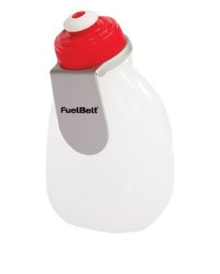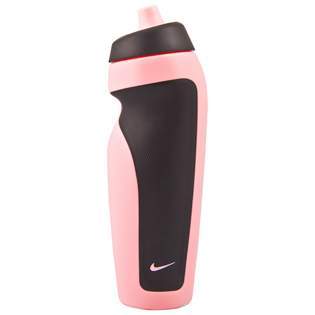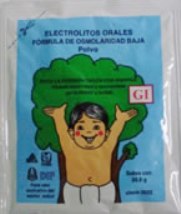OK then, so far we’ve looked at shoes and clothes in our equipment 101. This week we move on to accessories, beginning with equipment for hydration.
The accessories you carry will depend on three things; the type of runner you are, your distance and the type of run. If you’re doing a race everything comes down to the trade-off between weight and utility. For me, anything under marathon distance and I carry a watch and nothing else. For a marathon, I take a belt bag with gels and for an ultra I’ll add a water bottle. This is fairly consistent with other runners although some guys will take water for a marathon and a camel pack or backpack for an ultra. For training, the amount of equipment I bring normally depends on the distance and the type of race I’m training for. If its a quick 10k on the flat I might go out without anything, but for anything more than 15k, or if I’m training for an ultra, I bring the lot. This not only allows you to practice carrying the correct weight but also eating and drinking on the hoof.
Hydration
I reckon I’ve tried most of the options for hydration at least once. To start with I would bring nothing. When I started running in Edinburgh I would train a fast relatively flat 10k around my block not far off the speed I would run in an actual race. For this sort of running, the idea of the extra weight of a water bottle didn’t appeal to me. Besides, hydration isn’t really necessary for anything under 15k on the flat in the cold. A drink of water before or after the run are sufficient. I also found that you can get away without taking water during a 5, 10k or half marathon race. In the heat of Mexico I pick up water at the aid stations but put it over my head to cool down rather than in my belly. When I stepped my distances up to round 30k in Edinburgh I would plan my route to take water from the reservoir.

I only really started carrying water when I began training for a half marathon in Mexico city. To start with I used a 7oz fuelbelt water bottle clipped onto my shorts at the small of my back. This worked well for shorter runs but didn’t really carry enough water for longer distances. So, for longer distances I moved up to a belt with a half litre bottle. I found this a tad uncomfortable when the bottle was full. It was also inconvenient involving too much work to get the water in and out of it’s pouch every time I needed a bit of water. These days I go out without the belt and just carry the half litre bottle in my hand. It took me a while to get used to the extra weight on my arm but its well worth it for the convenience of being able to take sips of water throughout the run.

Another popular hydration option for longer distance running is the Camelbak. This allows you to carry anything up to three litres in a bag on your back, sipping the water by sucking it up through a plastic tube. These feel relatively comfortable and I’ve seen a lot of good runners using them, particularly for ultra distance races. The disadvantage is the weight, and certainly on the one or two occasions when I’ve tried to use one it’s always been just too heavy and hot. The water capacity is however a big plus for the Camelbak and I wouldn’t rule out using one in the future to be able to take on longer runs without access to water.
As for the contents of my water bottle there’s only one option for me. That’s suero oral. This contains electrolytes, meaning it has the same salt and sugar levels as your natural fluids to absorb more quickly and completely into your body. Here in Mexico, suero is marketed to help re-hydrating during vomiting and diarrhoea. It also works a treat for a hangover. For sports hydration, I find it works a hundred times better than marketed sports drinks that, to me, just seem to be like sugary fizzy drinks with a health spin. Maybe it’s because I have a generally low sugar intake but Gatorade and the like just make me feel sick. If I cant get suero oral the next best thing is water, but I find the suero helps me fight off cramp and keep running faster for longer.

There are three ways to get your hands on suero oral. First of all you can make your own. It’s simple. Just fill a half litre bottle with half water and half any type of fruit juice and add a pinch of salt. I normally prepare my suero in my running bottle and leave it in the freezer overnight. You can also buy ready mixed bottles of suero. In the US suero is marketed under the brand name of Pedialyte which is sold for infants suffering from diarrhoea. This can be useful if you’re running away from home and dont have time to make your own solution. In Mexico suero is also sold in powder form in sachets to be mixed with water. This is a great option for ultras since you can mix the powder with water at the aid stations. What I find works best is drinking about a litre every half k with about half the recommended solution, that’s a quarter sachet for every half litre of water.
Other options for hydration are purification tablets or water filtration systems. I guess these might be useful in emergencies for ultra long treks in the wild but, to be honest, its nothing I’ve ever felt the need to try myself. The very last option is to recycle your own water. This is described in ‘born to run’ but, frankly, I can’t imagine anything worse (except maybe recycling someone else’s). For my own running I’ll be sticking to the suero.
Recipe for suero;
- 1/4 litre water
- 1/4 litre fruit juice (grape, apple or mango for example)
- pinch of salt
Recommendations
- For short distances, 7-Oz FuelBelt Wedge Bottle with Clip
- Medium distances, Nike 1/2 litre hand-held water bottle
- Ultra races, sachets of suero oral
Next week, bags and belts.






Leave a Reply